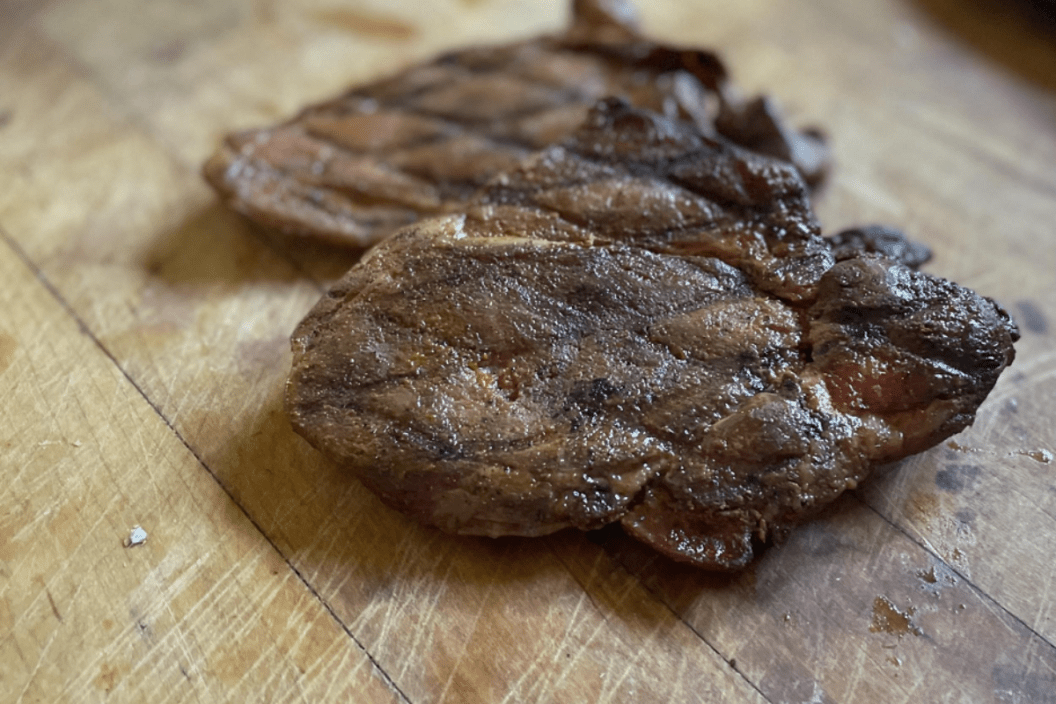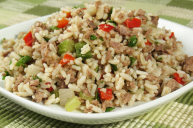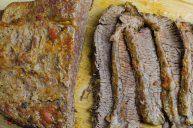Cajun food is well known in the south, but a lesser-known member of the cajun family is a meat treat called tasso. Tasso is smoked, seasoned meat from Southern Louisiana sometimes affectionately called cajun ham. It is a cured and smoked pork roast that is cajun and creole spiced with a jerky textured outside and a tender inside. Most people's introduction to tasso is as either a flavor base for stews and braised vegetables or part of cajun or creole dishes where it is diced and sauteed along with the Cajun trinity of onions, peppers, and celery in pasta or put in jambalaya to add a smoky, salty layer of flavor. If you feel adventurous, you can even make my family's favorite— a tasso sandwich.
Tasso's origin is impossible to trace back to the exact moment of creation but there are two prevailing theories. One is that it came from the French soldiers stationed at Fort Toulouse. The fort was founded in 1717 by the French Louisiana government on the eastern border of the Louisiana colony in what is now known as the state of Alabama. While stationed at Fort Toulouse the French soldiers interacted and intermarried with the Alibamon tribe where the soldiers learned the art of smoking and preserving meat. Many soldiers retired to the prairie region of Louisiana and brought the love of smoking and preserving meat with them, which became popular among the area's many cattle ranchers.
Another popular theory is that it comes from the efforts of the Spanish to Hispanicize the predominantly French region. In 1779 Louisiana's Spanish government brought 82 citizens from Malaga, Spain, and had them settle in the current area known as New Iberia. They introduced the Spanish "tasajo," a smoked beef used as a flavoring agent in Spanish cooking and the Cajun settlers embraced this practice as a way of preserving beef during long cattle drives.
Similar to most cajun and creole delicacies, tasso is most likely a combination of many cultural influences which combine and evolve to create a unique Louisiana food. Originally it was largely used to preserve beef in our large herding communities. As the herding communities slowly changed to sharecroppers with farm animals, the main ingredient changed from beef to pork. Traditionally it was prepared during the summer months at the Boucheries (a cajun community event where the animal is slaughtered and the meat is prepared and preserved). It remains predominantly a pork product, but you can use other proteins such as turkey, beef, or buffalo.
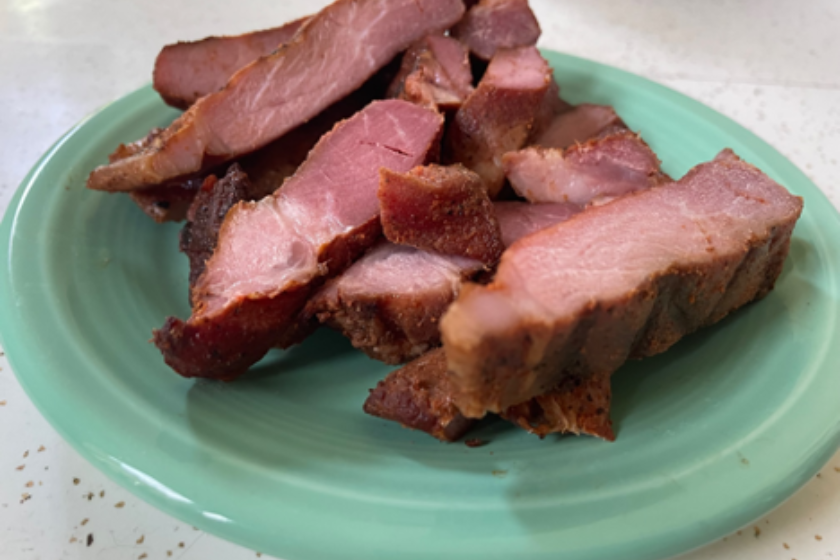
Jolie Meaux
Although people call it cajun ham, that is a misnomer. Unlike traditional ham that is made from the hind leg, tasso is made from the pork shoulder or butt. Although if you want to say ham, no one in Louisiana will correct you. We don't care as long as you say it's good. Smoked meat is a staple of life here. While most of us go to one of our many meat markets to buy smoked meats, they can be made at home.
Making tasso is actually a pretty easy process. The different processes are based on regional preferences, a whole roast sliced will produce a more tender tasso but with a smaller spice ratio than the sliced version. A large shoulder roast is sliced into smaller 3 to 5-inch pieces before being cured and smoked. Some prefer to cure and smoke the whole roast and then slice. The pork is placed in a salt cure mix and refrigerated for at least 3-4 hours, though some prefer a couple of days. The shorter cure is when you do a true cure which will add shelf life to the tasso. During refrigeration, the salt mixture begins to draw moisture out of the meat. After cured, the salt mix is washed off, and the pork is rinsed and rubbed with cajun and creole spice mixture. Once covered in spice, the tasso is hot smoked at a low temperature until cooked through. This curing and smoking technique provides a jerky-like exterior around a tender and juicy interior.
Tasso can do way more than be a flavor base or addition to cajun and creole dishes. It's great to add to your favorite hors d'ouerves such as creamy dips, charcuterie boards, or even sprinkled on your deviled eggs. We like to add it to cream-based soups and pasta dishes to add a little kick.
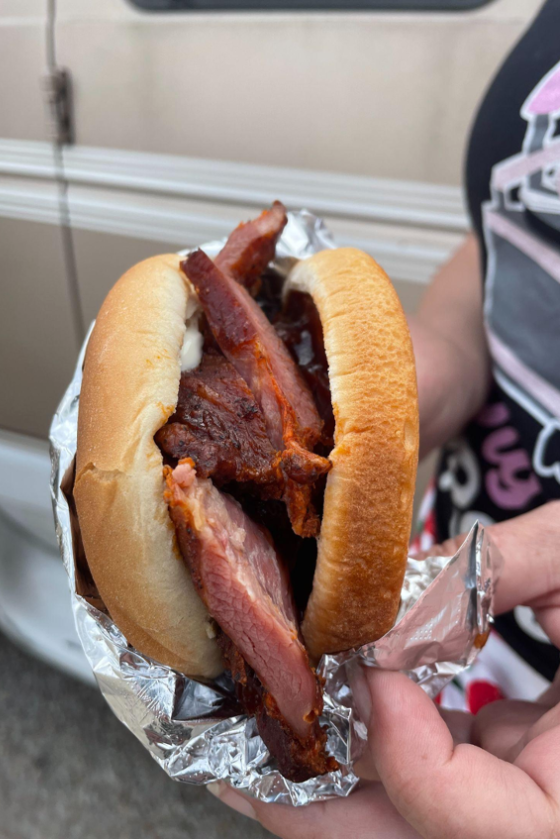
Jolie Meaux
Try it diced and mixed in with your favorite alfredo— it adds a cajun twist. Since it is in the ham and sausage family, tasso is perfect on the breakfast plate. We love it added to quiches and omelets to change up our usual fare. If you feel daring and want to challenge your spicy taste buds, slice it and make tasso sandwiches. The tasso sandwich can be found in the small town markets of Southern Louisiana and is a true local secret. We like ours on a soft roll with a barbecue and mayo spread to balance the heat.
If you don't feel like making it home, there are many meat markets in Louisiana that will ship it to you. Luckily it freezes well, so make or order extra. Once you start adding it to your dishes, you may become part cajun, which means you'll always have an emergency stash of tasso in your freezer.
READ: Everything You Need To Throw A Cajun Boil For The Entire Neighborhood
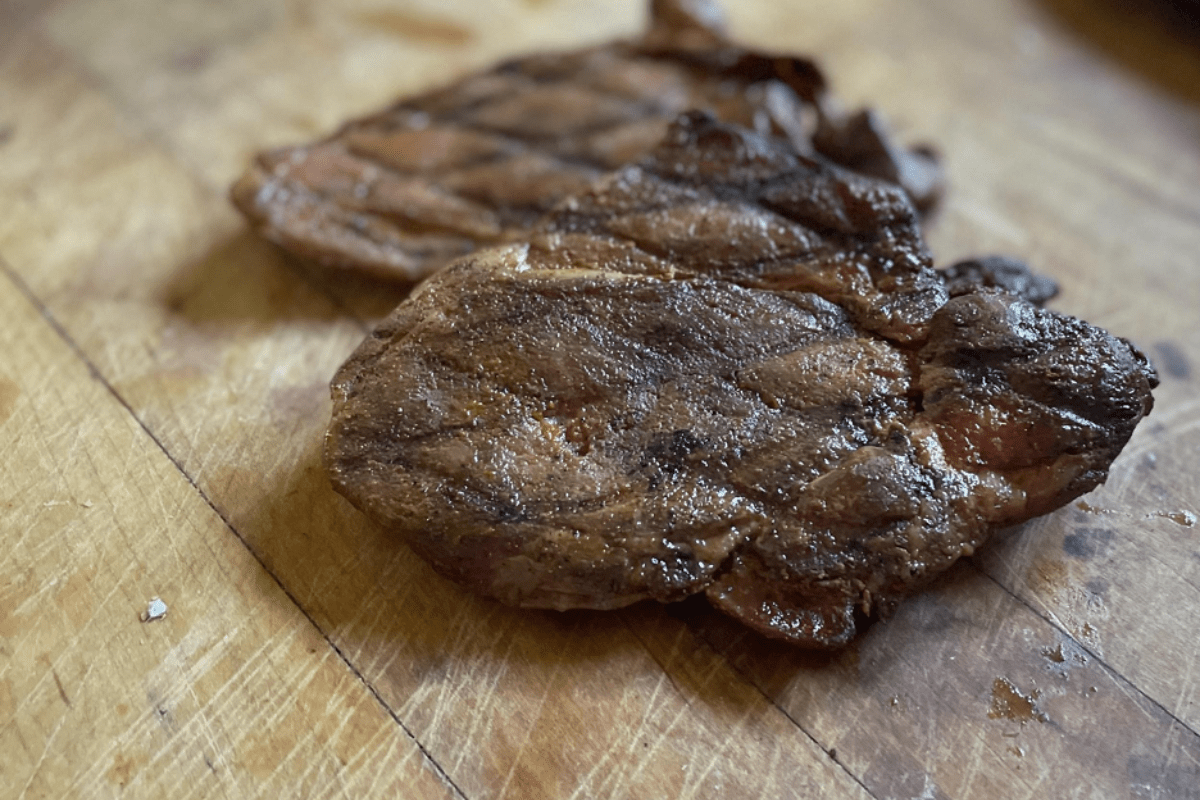
Tasso
Ingredients
Tasso Cure
- 5 lbs Pork Roast cut into 4 inch long pieces. 1/2-1 inch thick Shoulder or Butt
- 8 oz kosher salt
- 4 oz brown sugar
- 2 1/2 tsps pink curing salt
- 2 Tbsps Cayenne Pepper
- 4 tbs paprika
- 1 Tbsp Garlic Powder
- 1 Tbsp Onion Powder
- 3 Tbsp Black Pepper
- 1 Tbsp Dry Mustard
Instructions
Tasso Brine
- Combine the salt, sugar, and curing salt in a medium bowl, and thoroughly combine. Dredge pork pieces in brining mixture. Place pieces on a baking tray and refrigerate for 3-5 hours.
Seasoning and Smoking Tasso
- Preheat your smoker to 225 degrees F. Remove pork from the refrigerator and rinse off the brine mixture.
- Combine seasoning mix in a medium bowl. Coat each piece liberally with a seasoning mix and place in smoker for 4-5 hours until the meat thermometer reads 150 degrees F.
- Remove from smoker and let cool. Use immediately or wrap and freeze for later use.
